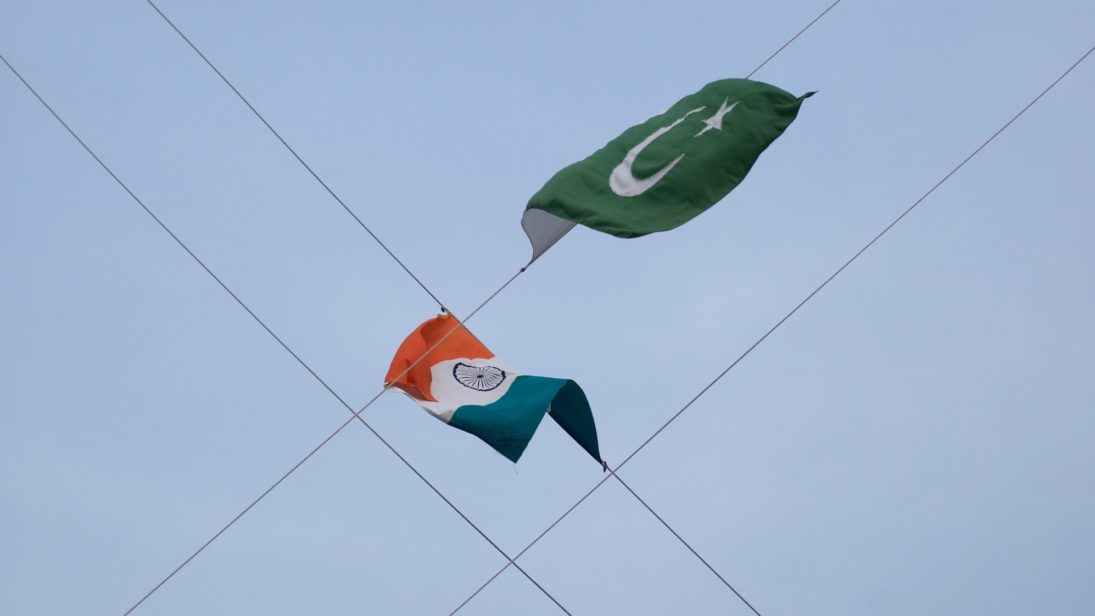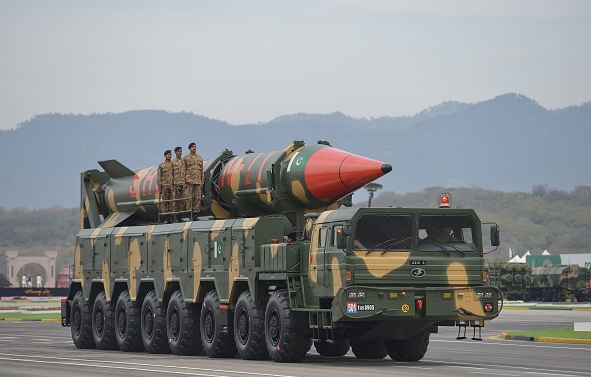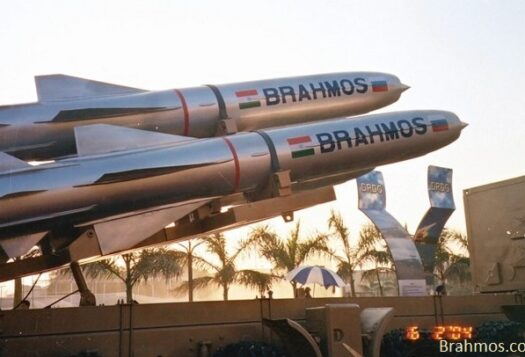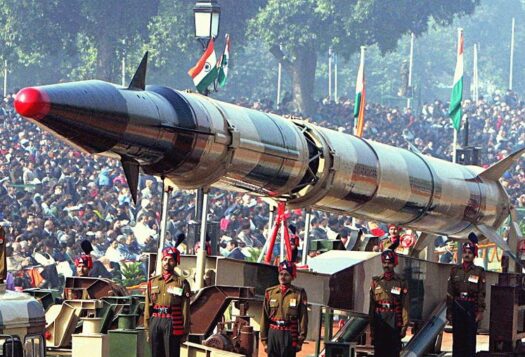
Introduction
Nuclear competition is gradually driving South Asia toward greater uncertainty and instability. The introduction of new weapons systems in the region indicates an emerging trend in favor of warfighting doctrines in both India and Pakistan. The rapid growth of counterforce capabilities could enable decapitating first-strike options. India’s testing of ballistic missile defense (BMD) interceptor missiles and Pakistan’s testing of multiple independently targetable re-entry vehicle (MIRV) technology has further compounded technological and doctrinal uncertainties, making an already fragile region more volatile.
These troubling technological developments have also opened up an opportunity for arms control negotiations. A trade-off involving Pakistan’s MIRVs and India’s BMD could help impede the spiraling arms race between India and Pakistan. Given the fact that India’s BMD has been a long-standing, acute concern for Pakistan, and that Pakistan rationalized the development of its MIRVs by alluding to India’s BMD, such a trade-off should be welcomed by Pakistan. At the same time, India’s BMD, regardless of its rationalization, could be neutralized should Pakistan deploy MIRVs along with cruise missiles and other penetration aids. Thus, the makings of a trade are apparent. It is high time for Pakistan and India to dampen these alarming trends by pursuing arms control.
The traditional approaches to arms control face momentous challenges in South Asia due to what many analysts call a security trilemma involving three hostile pairs: Pakistan vs. India, India vs. China, and China vs. the United States. Difficulties are further compounded by the asymmetry between India and Pakistan in terms of both their national power potential and ambitions. India, the greater power in the region, does not want to be locked up in equations with Pakistan. Under such circumstances, an arms control initiative can only be pursued under one of the following conditions:
- One of the competing states decides to renounce the competition and pursue unilateral restraint;
- All states involved in a competitive equation agree on a multilateral arrangement; or
- A tailor-made bilateral arrangement is conceptualized based on the peculiar opportunities that may arise as a result of technological or geopolitical changes.
This essay explores the possibility of a tailor-made bilateral arrangement between India and Pakistan. I recognize the disproportionality that prevails between the two countries, and therefore propose circumventing the parity principle that is central to traditional arms control thinking. Instead, I focus on the fundamental principle of international negotiations, i.e., to augment the national security interests of both sides.
Both Pakistan and India would stand to gain from my proposal, if implemented. The trade-off proposed here would help Pakistan save its scarce financial resources to meet other more urgent social and military needs. India could also maximize gains by investing its liberated fiscal resources and the energy as well as the expertise of its scientists in more productive and cost-effective projects.
Destabilizing Trends
On January 24, 2017, Pakistan tested the Ababeel, a surface-to-surface ballistic missile that is reportedly capable of delivering MIRVs. In its press release for this launch, the Inter Services Public Relations Directorate noted, “Development of Ababeel weapon system is aimed at ensuring survivability of Pakistan’s ballistic missiles in the growing regional Ballistic Missile Defence (BMD) environment.”
This press release clarifies that India’s BMD is now inextricably linked with Pakistan’s MIRVs because of the implications each carries for the other. Developed to protect India’s political leadership, command-and-control centers, and other vital assets, India’s BMD could be rendered obsolete by Pakistan’s MIRVs and cruise missiles, along with other countermeasures and penetration aids. The induction of Pakistan’s MIRVs would, in turn, become high-priority targets that could provide a strong rationale for India to pursue counterforce capabilities in a serious way. Counterforce and BMD capabilities could then support those championing a decapitating strike. Although India might not be able to locate and target all of Pakistan’s missiles, the perceived threat of a first strike would continue to push Pakistan to increase the number of its existing warheads.
Such trends would accentuate perceptions of insecurity and heighten the “use it or lose it dilemma,” creating more instability. Consequently, these trends would further complicate calculations of the requirements for a stable and effective deterrent in both countries. As a result, the subcontinent’s arms race will continue to escalate. What would India and Pakistan stand to gain from such developments?
Conversely, the linkage of Pakistan’s MIRVs to India’s BMD creates space for negotiations. This linkage is not yet set in stone, however. Both of these systems are not yet fully developed. Nor have they been deployed, which makes them better candidates for arms control negotiations. As Gerard Smith, the famous U.S. Cold War arms control negotiator who negotiated the Anti-Ballistic Missile Treaty, has argued, “new systems are easier to stop than fully developed ones.”1
Despite various rounds of testing of BMD in India and a preliminary test of the capability to dispense MIRVs in Pakistan, these programs are far from fully developed. Much work has yet to be done to enhance accuracy and effectiveness; improve intelligence, surveillance and reconnaissance (ISR) capabilities; and resolve integration problems. However, once fully developed and deployed, these systems would become integral to plans and policies, shutting down the window of opportunity currently available. Now is the time to consider a bold, stabilizing, and cost-saving trade-off.

An Immodest Proposal
An innovative, tailor-made arms control arrangement could allow India and Pakistan to nip in the bud two noncomparable but interrelated systems. The Indian side would be required to commit to no future testing of interceptor missiles in an anti-ballistic missile mode, including Ashwin Advanced Defense interceptor missiles and the Prithvi Defense Vehicle. In addition, New Delhi would commit to the nondeployment of BMD launchers as well as interceptor missiles at sea, on land, in the atmosphere, and in space. Nothing in this proposed agreement would affect India’s ISR capabilities, which would be a non-starter as improved ISR capabilities strengthen India’s conventional defense and help augment its second-strike capabilities. In return, Pakistan should commit to nontesting and nondeployment of “multiple warheads atop a single missile” (i.e., both MIRVs and maneuverable but not independently targetable re-entry vehicles).
Laboratory testing might continue in both countries. This would help both sides avoid unacceptable risks. Continued research and development, but not field- or flight-testing, could act as a safeguard against noncompliance and any “break-out” from agreed obligations. Namely, if one side did X, the other side would not be disadvantaged because it could do Y. Would continued laboratory work short of field- and flight-testing as well as deployment constitute a deal-breaker? No, because continued research and development would instead be a safeguard while helping to unfreeze the existing diplomatic stalemate.
Under the present circumstances, India and Pakistan might not be willing to ink a formal agreement that they fear they would later regret. But a voluntary political commitment followed by unilateral moratoria announced by India and Pakistan regarding their respective commitments could create enough space and confidence on both sides to codify this arrangement in a formal treaty within a period of five years.
Both sides might seek help from partners that possess sufficient “national technical means” to monitor and ascertain compliance of the parallel non-field- and flight-testing and nondeployment commitments. The United States and China – both important stakeholders in the stability of South Asia – could be helpful in this regard.
India and Pakistan could also agree to hold extensive meetings over the next five years to explore transforming bilateral pledges into the provisions of a formal arms control treaty, including, but not limited to, the issues of withdrawal clauses and procedures for reviewing problems that emerge from the misunderstanding or misinterpretation of treaty clauses, as well as implementation questions. Reportedly, the American and Soviet negotiators had more than 1,500 arms control meetings by the end of the 1960s before they managed to prepare ground for Strategic Arms Limitation Talks. This process would be demanding for India and Pakistan as well, but a deeper appreciation of the grave risks inherent in an unwarranted and destabilizing arms race could provide the necessary impetus to break the existing deadlock and make some progress on arms restraint.
Challenges
Such an agreement would be difficult to achieve for numerous reasons. To begin with, the Defence Research and Development Organization (DRDO) in India and the military in Pakistan might oppose this proposal because of their peculiar institutional outlooks and interests in their respective weapon systems. Pakistan’s military would resist any attempts to constrain its counterforce capabilities. Likewise, the DRDO would likely challenge this proposal because of its financial stake in these technologies.
Another significant challenge is that this proposal defies the conventional wisdom that arms control agreements limit the same types of forces. My proposal does not fit the framework of constraining like forces. Therefore, Pakistan might find it threatening to give up its MIRVs while India retains its MIRV capability. Likewise, India might find it pointless to trade off what it sees as a defensive capability meant to meet a variety of threats – and not just those emanating from Pakistan.
This points to yet another significant challenge: China is absent from these equations. It would be difficult to persuade India to constrain its BMD program as long as the possibility exists of China deploying a BMD system. However, many analysts argue that even if China were to deploy BMD, it would be a thin deployment. In all likelihood, a thin deployment would not undermine India’s strategic deterrence, particularly in the presence of India’s long-range missiles with MIRV capability.
Even with all of these obstacles, my proposal offers more national security benefits than risks to both Pakistan and India.
Advantages for Pakistan
India’s BMD is one of the key drivers behind Pakistan’s MIRV program. If India could agree to this proposal, Pakistan would stand to gain in several important ways. To begin with, the military utility of Pakistan’s MIRVs vis-à-vis India’s remains debatable. Evaluating the military utility of Pakistan’s MIRVs, Ankit Panda writes, “voices in New Delhi may use [Pakistan’s induction of MIRVs] as the straw to break the camel’s back on either no-first-use or on at least New Delhi pursuing its own symmetrical lower-yield battlefield nuclear option for a proportional low-level nuclear warfighting capability.”
Would a trade-off of Pakistan’s MIRVs for no Indian BMD bring India a decisive military advantage? Not necessarily. The answer partly depends on whether India develops MIRVs, which is almost inevitable if Pakistan does, but far from assured if Pakistan does not. Moreover, improvement in ISR capabilities resulting in better targeting with land- and sea-based cruise missiles could compensate for a Pakistani decision to forgo MIRVs. Also, Pakistan is “possibly building hard and deeply buried storage and launch facilities” that could strengthen command and control as well as survivability. Besides, Pakistan would continue to possess sufficient diversity in its weapons systems and platforms to strengthen its deterrent. Moreover, as noted earlier, Pakistani MIRVs would become a sponge for Indian warheads, raising concerns of unstable, offsetting deterrents.
In addition, MIRVs incur exorbitant costs in terms of both financial implications and fissile material consumption. Although precise costs cannot be estimated, if the experience of states that have developed similar technologies is any guide, such projects incur heavy expenses. For a state like Pakistan, with its fragile economy, this would be unwise. Granted, Pakistan’s military seems to get what it wants in terms of funding, but at some point, conventional capabilities will suffer in a strategic competition with India.
Moreover, Pakistan’s plutonium requirements are consistently increasing in the wake of its commitment to full spectrum deterrence and a nuclear triad. Additional infrastructure requirements might be needed for MIRVs. Under such circumstances, negotiating a way out of MIRVs might be both cost-effective and productive.
Advantages for India
The strategic effectiveness of India’s BMD is heavily contested, even inside India. Critics offer various reasons for their skepticism, including cost, effectiveness, technological challenges, and basic geography.2The strongest proponents of BMD acknowledge that national coverage is not feasible or affordable. Therefore, it would only provide limited security.
Above all, geography poses significant handicaps for Indian BMD, given the short flight times between the two countries. Nor does India possess the early warning capabilities to help with intercepts. Pakistan’s MIRVs would make Indian investments in BMD even more untenable.
Conclusion
If negotiated and properly implemented, an agreement by Pakistan to forgo MIRVs if India were to forgo BMD would save resources, help reduce nuclear dangers, stabilize India-Pakistan relations, and help break the deadlock and create space for negotiations between two nuclear armed states that face very different sets of threats and stand on different pedestals in terms of their national power and resources.
This idea – if it were to come to fruition – would help curtail the ongoing, expensive arms race between India and Pakistan and slow down destabilizing trends favoring the direction of warfighting doctrines in South Asia. Given the possible payoffs of this proposal, it deserves to be seriously considered. The challenges mentioned above are huge but not insurmountable. Political will and commitment to avoid costly adventures can help create conducive conditions to make this proposal a stepping stone for a more comprehensive arms control regime.
Editor’s Note: This essay is part of a new Stimson Center book, Off Ramps from Confrontation in Southern Asia, and has been republished with permission. The book features pragmatic, novel approaches from rising talent and veteran analysts to reduce tensions resulting out of nuclear competition among India, Pakistan, and China. The full book is available for download here.
Image 1: My Past via Flickr
Image 2: Farooq Nareem via Getty
***
- Gerard Smith, DoubleTalk: The Story of the First Strategic Arms Limitation Talks (New York: Doubleday, 1980).
- Manoj Joshi, “Government Baffled Over DRDO Chief’s Claim on Missile Shield,” Mail Today, July 18, 2012, http://indiatoday.intoday.in/story/government-baffled-over-drdo-chief-claim-on-missile-shield/1/208850.html; Narayan Menon, “Ballistic Missile Defence System for India,” Indian Defence Review 27, no. 3 (July-September 2012); Happymon Jacob, “Deterrence Debates and Defence,” The Hindu, April 21, 2014, http://www.thehindu.com/opinion/lead/deterrence-debates-and-defence/article5931349.ece.


